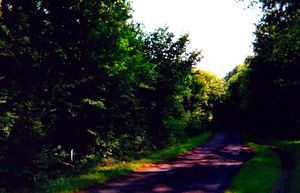Lammy
Lammy is a townland in South-East County Fermanagh, Northern Ireland.
Area 123:1:29
Etymology
(elms)
Griffiths Valuation 1862
Occupier……………………………Lessor Edward Bowes…………………………….. James Hare H Os & L James Crudden……………………………...James Hare H Os & L James Hare…………………………………. In fee Plantation Philip McKenna……………………………. James Hare H Os & L Mary McGivery……………………………..James Hare H Os & L Dominick McDonnell……………………… William Coles O & L James Mc Donnell………………………….. William Coles
1901 Census
Head of family………………………Landholder if different Patrick McGarvey James McKenna James Bowes Mary Crudden Sarah Coulter
Surnames in 2005
Johnston Lynch
Johnston Family
The Johnston farm was bought in the mid 1920’s from a man named Coulter who also owned land in Lisnamallard townland which was the site of the corn mill referred to on that page. He had quarreled with his neighbour there, Sandy King, about a right of way over King’s land. They had gone to law about this and when King came home, he was asked, “How did it go?” He took off his hat and said that the full of it of gold sovereigns would not cover the cost and he had won the case!!! Quarrels over rights of way were frequent in the early 20th century. Perhaps this was because the various land acts had weakened the power of the landlord or his agent who before this had settled disputes like this or maybe it was the prospect of owning their own farms that made farmers very conscious of preserving every inch of their land. The story is often told of two farmers who quarreled and went to Clones next market day to consult a solicitor. When farmer A approached the solicitor of his choice, he was told that farmer B had already engaged his services. However, he was recommended to try another solicitor whose office was up on the Diamond. To help him, he was given a letter of recommendation to bring with him. Farmer A was a canny bird and he and a friend dropped into the nearest pub and carefully opened the letter. The message was simple but clear in its meaning, “Two fat geese come to market. You pluck one and I’ll pluck the other” Presumably Coulter had received a ‘plucking’ for subsequently he sold both farms. The Lisnamallard land was sold to the Johnston brother whose land already marched it. One of the fields on the Johnston farm was called The Stripe because of its long narrow shape which reached over the hill.
Transport
There was a track across from the Cloghagaddy road to the Carneyholme road using this field and it is said that there were once five houses along it. The track emerged a short distance from the turn in the road known as the Sweep of Drumbarry. This was a favourite meeting place for huntsmen when hunting on foot with hounds. It attracted a large following especially Boxing Day and New Year because this road carried only local traffic and it was more or less central to a hunting area which stretched from Loughgare to the other side of Newtownbutler.

This photograph was taken in 2004 and while the road surface may be better than 1777 it is easy to imagine the feelings of coach passengers approaching this dark tunnel. What a pity we do not have a story of a highwayman to match it.